Batting average .324 Role Baseball player Home runs 181 Height 1.93 m | Runs batted in 997 Weight 86 kg Name Babe Herman | |
 | ||
Died November 27, 1987, Glendale, California, United States | ||
Babe Herman Tourney
Floyd Caves "Babe" Herman (June 26, 1903 – November 27, 1987) was an American right fielder in Major League Baseball who was best known for his several seasons with the Brooklyn Robins (later the Brooklyn Dodgers, now the Los Angeles Dodgers).
Contents
- Babe Herman Tourney
- BABE RUTHS CALLED SHOT THE EVIDENCE SAYS HE DIDNT AND RUTH LATER ADMITTED IT
- Career
- References
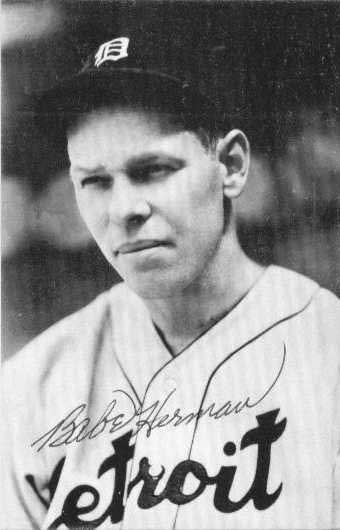
Herman was one of the most noted power hitters of the late 1920s and early 1930s, and hit for the cycle a record three times; his .532 career slugging percentage ranked fourth among hitters with at least 5000 at bats in the National League when he retired. His .393 batting average, .678 slugging percentage, 241 hits and 416 total bases in 1930 remain Dodgers franchise records, with his 143 runs being the post-1900 team record; he also set team records (since broken) that year with 35 home runs and 130 runs batted in. He was also renowned for his varied misadventures as a defensive player and baserunner, which earned him derision – and eventually affection – among fans.
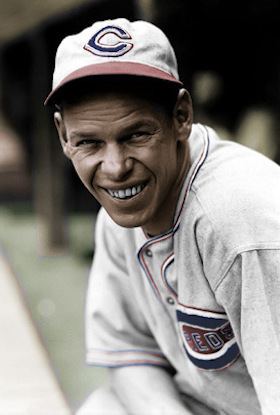
BABE RUTH'S "CALLED SHOT". THE EVIDENCE SAYS HE DIDN'T AND RUTH LATER ADMITTED IT.
Career
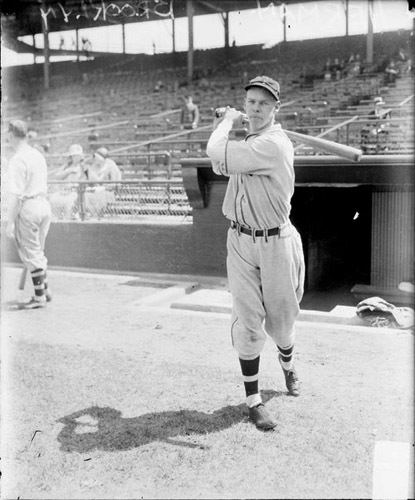
Born in Buffalo, New York and raised in Glendale, California, Herman signed with a minor league team in Edmonton, Alberta at age 18, and spent five years playing for six different teams, including tours in the farm systems of the Boston Red Sox and Detroit Tigers. In a 1922 spring training game, he was used as a pinch hitter for Ty Cobb; but the Tigers, with no outfield vacancies, returned him to the minors, where he hit .416. He was signed for Brooklyn in 1925 by a scout who said of him, "He's kind of funny in the field, but when I see a guy go 6-for-6, I've got to go for him." He made his major league debut as a first baseman with the Brooklyn Robins in 1926, hitting .319 as a rookie; he finished fourth in the National League in doubles (35), and seventh in home runs (11) and slugging (.500). In 1928 he placed fifth in the National League with a .340 batting mark.

He enjoyed an outstanding year in 1929, setting team records with a .381 batting average and a .612 slugging average (breaking club marks of .379 by Willie Keeler and .588 by Jack Fournier) while collecting 217 hits, 105 runs and 113 runs batted in (RBIs); but the National League was in the middle of an offensive explosion, and he finished behind Lefty O'Doul (.398) for the batting title and was only seventh in the league in slugging. He had two doubles and two triples on June 5, and came in eighth in the 1929 MVP voting. He followed up with his most spectacular year by improving his own batting and slugging records, with his .393 batting average again placing second in the league behind Bill Terry, who hit .401 – as of 2013, the last .400 season in the NL. Herman was also third in the National League in slugging, behind Hack Wilson and Chuck Klein; the league as a whole batted .303 in 1930, and while Herman's 241 hits were only third in the National League behind Terry and Klein, it was then the fifth highest total ever in the league. Herman broke Fournier's 1924 club record of 27 home runs, and tied his 1925 total of 130 RBIs. Gil Hodges broke his team record of 40 home runs in 1951, and Roy Campanella posted 142 runs batted in during 1953; Duke Snider was the first left-handed Dodger to break Herman's home run and runs batted in records. There was no MVP award given in 1930.
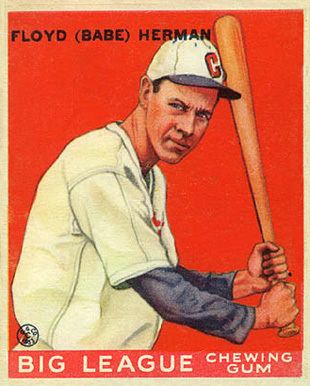
Herman was an outstanding hitter, but a markedly below-average fielder who led the National League in errors in 1927 as a first baseman and in each of the next two years playing in right field. Fresco Thompson, a 1931 teammate, observed: "He wore a glove for one reason: because it was a league custom." Herman developed a self-deprecating attitude about his shortcomings; when informed by a local bank that someone had been impersonating him and cashing bad checks, he said, "Hit him a few flyballs. If he catches any, it ain't me." His style of play, along with that of the entire team, led to Brooklyn being dubbed "The Daffiness Boys", with sportswriter Frank Graham noting, "They were not normally of a clownish nature, and some of them were very good ballplayers, indeed, but they were overcome by the atmosphere in which they found themselves as soon as they had put on Brooklyn uniforms."
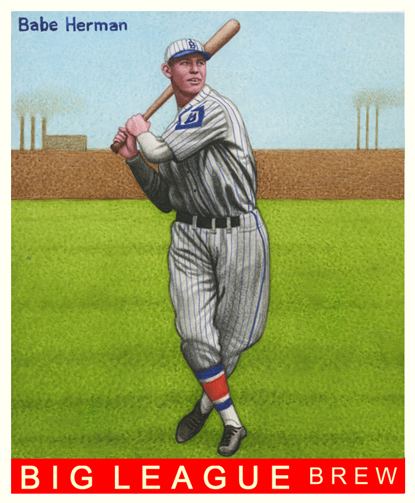
In the seventh inning of a game on August 15, 1926 against the Boston Braves at Ebbets Field, Herman tried to stretch a double off the right field wall into a triple with one out and the bases loaded. Chick Fewster, who had been on first base, advanced to third base – which was already occupied by Dazzy Vance, who had started on second base but became caught in a rundown between third and home and was dashing back to third. All three men ended up on third base, with Herman not having watched the play in front of him. The Braves' third baseman, Eddie Taylor, tagged all three just to be sure of getting as many outs as possible. The slow-footed Vance had been a major contributor to the situation, but according to the rules, because he was the lead runner and not forced to advance, he was entitled to third base, so umpire Beans Reardon called Herman and Fewster out. Thus, Herman "doubled into a double play," although Hank DeBerry also scored the game's winning run on the play before the daffiness started. Herman later complained that no one remembered that he drove in the winning run on the play. The incident led to the popular joke:
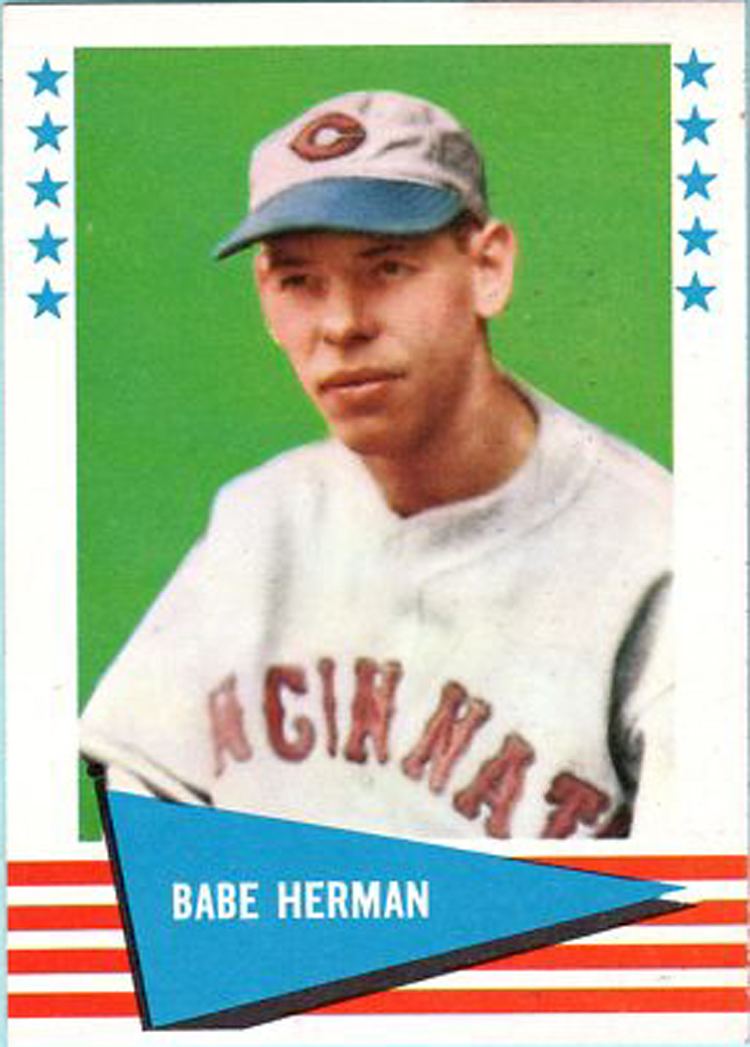
On two occasions in 1930 – May 30 and September 15 – Herman stopped to watch a home run while running the bases and was passed by the hitter, in each case causing the home run to count only as a single. And on September 20 of the following year, he was thrown out trying to steal a base against the St. Louis Cardinals, even though opposing catcher was 48-year-old Cardinals manager Gabby Street, appearing in his first game (as an emergency substitute) since 1912. Pitcher Vance dubbed him "the Headless Horseman of Ebbets Field" for his various mistakes.
In 1931 Herman "slipped" to a .313 average, and although he led the National League with 77 extra base hits, was third in total bases, and hit for the cycle on both May 18 and July 24, he was traded to the Cincinnati Reds before the 1932 season. He bounced back with a solid year, leading the National League with 19 triples and tying Sam Crawford's 1901 Reds' team record for left-handed hitters of 16 home runs, which was broken in 1936 by Ival Goodman with 17. Herman played for the Chicago Cubs in 1933–34, batting .304 in the latter season. On July 20, 1933 he hit three home runs, and on September 30 he hit for the cycle for the third time, a feat only he and Bob Meusel accomplished in the 20th century. (In 2015, Adrián Beltré also hit for the cycle a third time). After a brief stint with the Pittsburgh Pirates in 1935, he was traded back to the Reds, staying with them through 1936. On July 10, 1935, he hit the first home run ever in a major league night game. He played briefly for the Tigers in 1937, hitting .300 in 17 games, and then returned to the minor leagues. Nine years later in 1945, he was re-signed by Brooklyn at age 42, and played his 37 final big league games with the team. He received a strong ovation from the Ebbets Field crowd in his first turn at bat, and tripped over first base after hitting a single. After retiring, he worked as a scout for several teams until 1964. Herman ended his major league career with a .324 batting average, 1818 hits, 181 home runs, 997 RBIs, 882 runs, 399 doubles, 110 triples and 94 stolen bases in 1552 games.
His son was a mathematics teacher at Herbert Hoover High School, the cross-town rival of Babe's high school Glendale High School, from the late 1960s through the early 1980s.
Herman was among the subjects interviewed for the 1966 book The Glory of Their Times. He died in Glendale, California at age 84 following a bout with pneumonia and a series of strokes. He is interred there in the Forest Lawn Memorial Park Cemetery.
